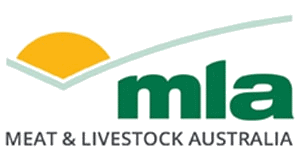W.IAW.2404 - 2024 Market Highlight
This activity covers market trends, commodity prices, beef and cattle.
| Project start date: | 01 January 2024 |
| Project end date: | 31 December 2024 |
| Publication date: | 08 April 2025 |
| Project status: | Completed |
| Livestock species: | Grass-fed Cattle |
| Relevant regions: | International |
Summary
2024 Highlights:
- The 2024 feeder cattle import permit was delayed by 1.5 months and issued on 16 February 2024, after the Presidential election, so there was a period of lost income in January and February. This caused GAPUSPINDO member feedlots to import an average of 43,000–49,000 head/month in semester one. This coincided with Australia's low feeder cattle price, namely USD 2.4–2.6/kg LW.
- The highest peak of cattle imports from GAPUSPINDO members in December reached 73,000 head, which coincided with the three months before Eid al-Fitr. The total cattle import from GAPUSPINDO members increased by 44% compared to 2023.
- The import permit quota for 2025 decreased by 50% from 2024, which was around 700,000 head, to only 350,000 head, and the import permit was issued on 7 January 2025.
- Local cattle traffic at the end of the year also increased, especially for Christmas and the New Year, as well as the Meugang (Aceh/North Sumatra) and Munggahan (Java) traditions. However, for the NTT region, due to the rainy season causing high sea waves and the long distance to the Greater Jakarta and Kalimantan areas, livestock expenditure decreased at the end of the year. In total, in 2024, it decreased by 11%.
- Cattle exports from livestock sources such as the Bali region increased by 27%, and Australian cattle imports increased by 44%. This was because meat imports in 2024 fell by 27% compared to meat imports in 2023, thus positively increasing livestock imports to meet community consumption.
- The foot-and-mouth disease (FMD) outbreak is still affecting local farmers, especially during the November–December season transition in East Java, due to weak biosecurity in local farms. The government has re-implemented the vaccination program, and producers do not immediately send their livestock to slaughterhouses in Surabaya, so livestock imports in 2024 fell by 13%.
- Australia is still the leading player in imported beef, with 63.53% of total imports, or 99,070 tons, followed by India, 31,890 tons, the United States, 10,330 tons, New Zealand, 5,820 tons, and Brazil, 8,830 tons.
- The beef deficit in 2025 is around 400,000 tons or 52% of the need. In 2029 there is a target to import 1 million beef cattle and 1 million dairy cattle to meet the Free Nutritious Meal campaign.
Objectives
To provide market insights from seven major cities in Indonesia, around commodity prices, market trends, and in-market policy.
Key findings
Due to the lack of Indian Buffalo Meat (IBM) in the market during 2024 and the favorable prices for Australian feeders, there has been a 41% increase in feeders import numbers into Indonesia year-on-year.
Benefits to industry
Provides market insights on Indonesian trends and market conditions.
MLA action
Continue the project for FY25.
Future research
Continue the project to monitor and provide market insights into Indonesia's new flagship program, 'Free Nutritious Meals' in 2025.
More information
| Project manager: | Helen Fadma |
| Contact email: | Reports@mla.com.au |
| Primary researcher: | Ade Suherman Hasibuan |


